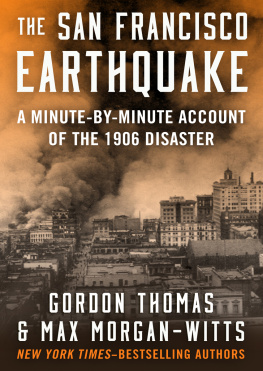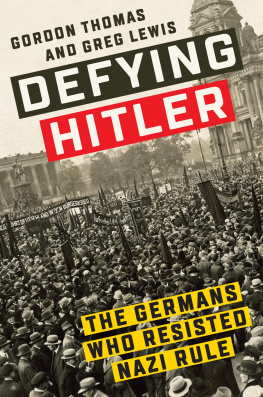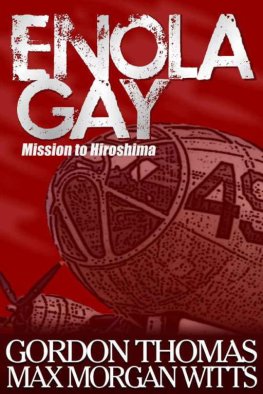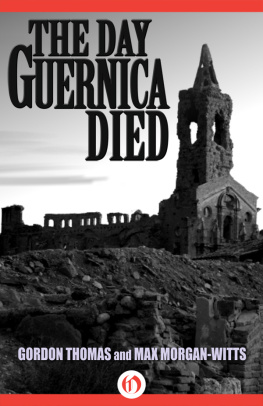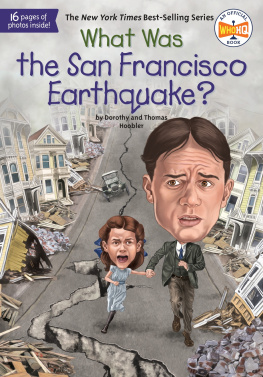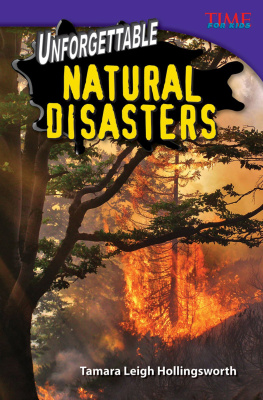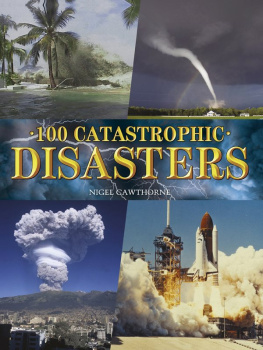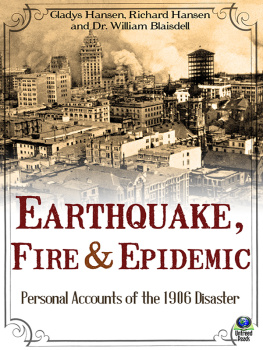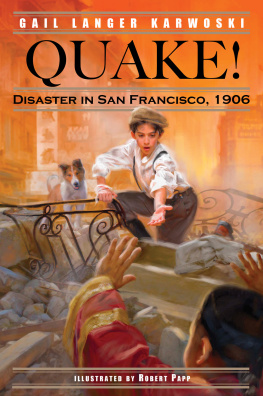
The order was shoot to kill all suspected looters
(Moshe Cohen)
The San Francisco Earthquake
A Minute-by-Minute Account of the 1906 Disaster
Gordon Thomas
and Max Morgan-Witts

All rights reserved, including without limitation the right to reproduce this ebook or any portion thereof in any form or by any means, whether electronic or mechanical, now known or hereinafter invented, without the express written permission of the publisher.
Copyright 1971 by Gordon Thomas and Max Morgan-Witts
ISBN: 978-1-4976-5883-7
This edition published in 2014 by Open Road Integrated Media, Inc.
180 Maiden Lane
New York, NY 10038
www.openroadmedia.com

With great respect, we would like to dedicate this book to all those who were kind enough to grant us an interview, to tell us about themselves and their experiences, and in general to give us the sort of welcome that San Franciscans are famous for.
Without the help and cooperation of all those that follow, this book could not have been written.
1906 Eyewitnesses
Mrs. William Wood Adams
Gwendolyn Applegarth (ne Powers)
Jack Applegarth
Robert S. Babin
Marjorie Brown
Bettina Bruckman
Moshe Cohen
George H. Cabannis
Major General James Code (Ret.)
John Conlon, Jr.
Margaret Edith Dawson (ne Robertson)
Captain William Figari
Edgar Gleeson
Roy Graves
Ethel Grubb
Hanson Grubb
Harry Hilp
Chingwah Lee
Larry Lewis
Peter Michelson
Geneve Shaffer Parsons
Celia Poitrier
Augusta Politzer
Paul Redenger
William Roddy
Louise Schlaich
Karl Schlaich
Marjorie Shinkel
Frank Sprenger
Today
Mayor Joseph L. Alioto
Disaster Corps Director Edward P. Joyce
Fire Chief William F. Murray Mac Slee
Contents
List of Illustrations
TODAY

San Francisco today (San Francisco Convention and Visitors Bureau)
San Francisco has violated all underwriting traditions and precedents by not burning up.
N ATIONAL B OARD OF F IRE
U NDERWRITERS , October 1905
The further you are from the last big earthquake, the nearer you are to the next.
P ERRY B YERLY , Department of Seismology, University of California
San Francisco, serene, indifferent to Fate.
B RET H ARTE
I T WILL happen again.
Yet, with a disregard for reality almost beyond comprehension, San Francisco ignores the sentence nature has passed on it. At any given moment, probably with one great convulsive opening of the earths crust, much of the forty-seven square miles the city occupies will crumble in an avalanche of reinforced concrete, iron, steel, and plate glass. The destruction of San Francisco will be just one of the by-products of a major earthquake somewhere along the San Andreas Fault.
Depending on its strength, duration, and epicenter, San Francisco and its hinterland will be either leveled or raised.
When the moment comes, the earthquake will show no prejudice. It will mete out death equally to white and black, Chinese and Indian. It will level brothels and luxury hotels. Supermarkets, department stores, and banks will be treated as one. Desks, filing cabinets, shelves, and other free-standing items will go first. Then the plate-glass windows will shatter. Even reinforced concrete and steel will be forced to yield. It could be over in a matter of seconds.
Some of the more modern buildings meet present-day building codes. But no building code so far devised can guarantee total protection against even a minor earthquake.
Neither size nor beauty will offer protection against the tremor. The Golden Gate Bridge will be on equal terms with billboards and neon signs urging people to fly Trans World Airlines. San Francisco International Airport can expect to fare no better than the shrimp sellers on Fishermans Wharf. Churches and synagogues, cocktail lounges and massage parlors, will all be treated on the same basis.
Some experts say the earthquake is overdue. Others, more cautious, calculate it will happen any time during the next hundred years. Most scientists refuse to make a positive prediction. If they did, they contend, it could cause immediate panic. They say that panic can wait.
Perhaps not for long. No one who has made a study of earthquakes will be surprised if it occurs before you finish reading this book.
It will happen in one of three ways: the earth will be displaced either horizontally, or vertically, ormore likelyin a combination of both. The shifting forces, which will course upward twenty or thirty miles through the earths crust, will, at the breaching point, produce enough destructive power to collapse whole areas of the city.
Over the years several attempts have been made to estimate the energy likely to be generated. In the fifties scientists speculated that the quake would produce enough energy to power the entire U.S. Sixth Fleet at full speed for five hundred years. In the mid-sixties it was compared to the explosive force of ten thousand atomic bombs. A more meaningful comparison might be: if the entire energy force were concentrated on the one-square-mile business section of the city, the whole area would be lifted six thousand feet into the air.
The San Andreas Fault passes within eight miles of the center of San Francisco. It is one of the great fractures of the world, a scar that runs most of the length of California. For years now, pressure has been steadily mounting along the fault. Whole areas of California have been slowly moving as a result of the strain.
Three times the bedrock found the pressure too great to withstand. Then, when the three major earthquakes occurred, the area was sparsely populated. Most of the rupture ran through beaches, fields, valleys, and hillsides. Today these areas are thickly populated. On the average, one thousand people settle on or near the San Andreas Fault each day. Nowhere in the United States is the density of population greater than in San Francisco and its environs. Nowhere is disregard of the danger more apparent.
For more than ten years, the expertsthe seismologists, the geologists, the structural and civil engineershave warned the city of the impending disaster. They have recommended that the height of buildings be limited and the locating of new housing developments be carefully planned. The advice is usually politely received, but all too often it is rejected under the influence of the profit motive.
To cope now with the experts predictions, San Francisco has a Disaster Corps Director. He is the man the experts can talk to, while the rest of the city gets on with the real business of living.
His office is located in the downtown area, where the greatest effect of the earthquake will undoubtedly be felt. His salary is $1400 a month, little more than a topless waitress in one of the citys bars makes in tips. He has a staff of fifteen, a budget of $160,000, and an Emergency Operations Plan to meet the aftermath of a major earthquake. He is a reasonable, sincere, and practical man. When the tremor comes, he says, he will face a number of rather bizarre problemsfor example, the conversion of local buses into motorized morgues and ambulances to carry away the dead and the dying. He estimates that casualties could total up to 350,000.
Next page
